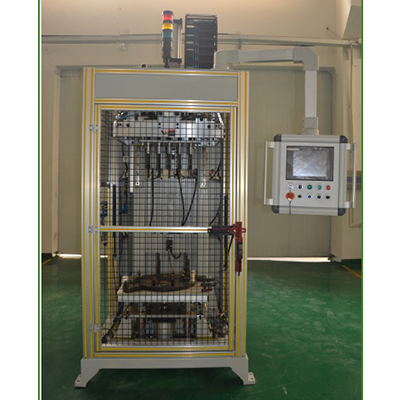Because of the solid phase connection, the connection temperature is usually lower than the melting point of the base metal (or metal intermediate layer), so the pressure must be used to make the surface to be connected in solid state to achieve close contact, through plastic deformation, recrystallization and diffusion and other actions to achieve interatomic bonding. The dominant role of pressure in forming the joint is emphasized here. But in some pressure welding process, the welding zone metal melting and pressure is applied at the same time, its process is heating - melting - metallurgical reaction - solidification - solid phase transformation - joint, so strictly speaking, this situation belongs to the liquid-solid phase connection. Riveting nut gun pressure welding is the main means of pressure, but in order to improve metal plasticity, speed up diffusion, significantly reduce the pressure and time, often auxiliary heating means. Resistance welding, friction welding, explosive welding and ultrasonic welding are pressure welding.

The most widely used assembly process in the automotive industry is resistance spot welding. This rivetless connection process has been proved to be reliable in mass production. Due to the difficulties mentioned above when using resistance spot welding technology to connect aluminum plates and the mixed plates of aluminum and steel plates, researchers began to consider using adhesive, friction stir welding and riveting to replace resistance spot welding method to connect aluminum plates and the mixed plates of aluminum and steel plates. Although adhesive joints have good fatigue performance, they are prone to deformation when curing at high temperature. Although there is no welding deformation in FSW, the residual process holes after mixing will weaken the static and dynamic mechanical properties of the joint, and the long process time of FSW is not conducive to mass production. The traditional riveting process requires pre-punching the riveting materials and then connecting them with rivets. This kind of rivetless joint process is complicated, the appearance quality is poor, the efficiency is low and it is difficult to realize the automation, which greatly limits the development of the automation of riveting process, so there are great limitations. Obviously, the application of new lightweight materials presents a new challenge to the application of thin plate connection technology in automobile manufacturing industry.